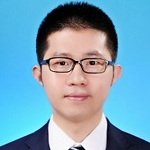Waste Management and Recycling for Sustainability
A special issue of Sustainability (ISSN 2071-1050). This special issue belongs to the section "Sustainable Engineering and Science".
Deadline for manuscript submissions: 16 June 2024 | Viewed by 7851
Special Issue Editors
2. School of Metallurgy, Northeastern University, Shenyang 110819, China
Interests: urban mining; recycling; circular economy; thermodynamics; CALPHAD; metallurgical slag
2. School of Metallurgy, Northeastern University, Shenyang 110819, China
Interests: metallurgical slag; carbon capture, utilization and storage (CCUS); Cr-bearing waste
Special Issue Information
Dear Colleagues,
It is our pleasure to announce a new Special Issue of the journal Sustainability titled “Waste Management and Recycling for Sustainability”.
Increasing environmental and societal pressures in recent years have called for more responsible processing of end-of-life (EoL) waste. To achieve the aim of a sustainable future and circular economy, the development of technology to recycle and dispose of waste efficiently is urgently required. Wastes such as WEEE, LIBS, metallurgical slags, CO2-bearing flue gas, etc. generated in manufacturing processes and industries have been raising concerns recently because of their high potential values and possibilities to be alternative metal resources considering the depletion of high-grade ores.
This Special issue will focus on recent advances in the microstructural properties of waste composites; innovative experimental techniques; analytical methods; and the design, production, and practical applications of disposing of these materials. We are especially interested in theories or technologies related to extracting and recycling metals from various wastes through physical, thermochemical or combined processes. The use of special characterization methods such as X-ray diffraction, SEM-EDS, and other thermal analysis is advisable.
We are pleased to invite scientists in the field of metallurgy, construction, environmental engineering, chemistry, materials engineering, and related fields to publish their own and original research articles and reviews in this Special Issue.
In this Special Issue, original research articles and reviews are welcome. Research areas may include (but are not limited to) the following:
- Thermodynamics and kinetics studies;
- Innovation recycling technologies and processes;
- E-waste recycling;
- Spent lithium battery recycling;
- Metallurgical slag recycling;
- Phase diagram studies for waste oxides systems;
- Carbon capture, utilization and storage.
Dr. Junjie Shi
Dr. Qing Zhao
Dr. Xingbang Wan
Guest Editors
Manuscript Submission Information
Manuscripts should be submitted online at www.mdpi.com by registering and logging in to this website. Once you are registered, click here to go to the submission form. Manuscripts can be submitted until the deadline. All submissions that pass pre-check are peer-reviewed. Accepted papers will be published continuously in the journal (as soon as accepted) and will be listed together on the special issue website. Research articles, review articles as well as short communications are invited. For planned papers, a title and short abstract (about 100 words) can be sent to the Editorial Office for announcement on this website.
Submitted manuscripts should not have been published previously, nor be under consideration for publication elsewhere (except conference proceedings papers). All manuscripts are thoroughly refereed through a single-blind peer-review process. A guide for authors and other relevant information for submission of manuscripts is available on the Instructions for Authors page. Sustainability is an international peer-reviewed open access semimonthly journal published by MDPI.
Please visit the Instructions for Authors page before submitting a manuscript. The Article Processing Charge (APC) for publication in this open access journal is 2400 CHF (Swiss Francs). Submitted papers should be well formatted and use good English. Authors may use MDPI's English editing service prior to publication or during author revisions.
Keywords
- sustainability
- metallurgy processes
- urban minerals
- phase diagram
- thermodynamics
- CCUS







